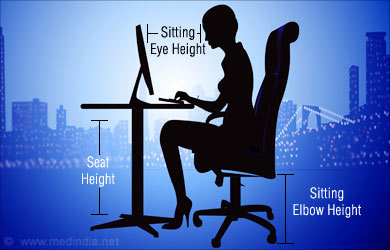- Human factors and ergonomics - (http://en.wikipedia.org/wiki/human_factors_and_ergonomics)
About
The International Ergonomics Association defines ergonomics or human factors as “the scientific discipline concerned with the understanding of interactions among humans and other elements of a system, and the profession that applies theory, principles, data and methods to design in order to optimize human well-being and overall system performance.”
Ergonomics is a multidisciplinary field incorporating contributions involving psychology, engineering, industrial design, biomechanics, mechanobiology, physiology and anthropometry. In simple terms, ergonomics is a discipline that deals with designing for people wherever, and whenever, they interact with products, systems or processes.

Are ergonomics and human factors the same? Well, for all intents and purposes, they are different terms that mean the same. The only difference is that one term may be more favored in an industry, or country, in comparison to another!
The purpose of ergonomics is to complement or help enhance the strength of individuals while downplaying their limitations and not forcing them to adapt. To help achieve this there needs to be a thorough understanding of the differences in population in terms of attributes such as size, strength, cognitive ability, age, experience, expectations and goals.
With an understanding of the users and their various experiences, professional ergonomists analyze how people interact with products, processes and environments on an everyday basis. To evaluate how a person fits with the technology, ergonomists take into account the activity or the job, the demands the job makes on the person, the equipment or tool used and the kinds of information used for the activity. With this knowledge they make an effort to optimize performance by making user-friendly, safe and more efficient systems.
There is a huge body of research related to ergonomics regarding the biomechanical, physiological and cognitive effects of work on people, their understanding of the processes and the efficiency of systems.
Domains of Specialization
Ergonomics constitutes three main research areas - Physical, cognitive and organizational ergonomics.
Physical ergonomics is concerned with human anatomy and also with the link between physical activity and some of the anthropometric, physiological and bio mechanical characteristics. Its principles have been used to design industrial and consumer products; improvised screw drivers made with serration to enhance grip is a classical example!

Cognitive ergonomics is about cognitive mental processes such as perception, memory, reasoning, and motor response and their impact on the human- system interaction. A classical example is the human –computer interaction involving several facets such as skill, decision-making, stress and workload.
Organizational ergonomics deals with socio-technical systems and the optimization of these systems. It is concerned with crew resource management, communication, work design, work systems, design of working times, teamwork, participatory design, community ergonomics, cooperative work, new work programs, virtual organizations, telework, and quality management.
Applications
There is evidence to show that Greeks used the principals of ergonomics to design their tools, jobs, and workplaces as far back as the 5th century BC.The description of the surgeon’s work place by Hippocrates is a classic example.

In the 19th century, during the industrial era, Frederick Winslow Taylor was the first to come up with the "scientific management" method, to assess the most optimum way to carry out a task. He discovered that coal workers could be made to work more efficiently by incrementally reducing the size and weight of coal shovels. This was done until the fastest shoveling rate was reached.
During the World War I aircraft design gained a lot of attention. Aero medical research started focusing on the driver behavior as well and efforts were made to differentiate the characteristics of successful pilots with unsuccessful ones. It was during these studies that it was revealed that even the planes operated by the most skilled pilots sometimes crashed and this is when terms such as human factors or ergonomics entered the scene. More attention was shifted to the cognitive skills of the pilots and its effect on their productivity. This led to the Hawthorn Effect which suggested that “motivational factors could significantly influence human performance.”
The space age saw new human factors, such as weightlessness and anti-gravitational forces influencing human physical activity. The present age of informational technology has seen a boom in ergonomic activity with advanced technologies in human kinetics, movement patterns, body-mapping and heat zones being used by companies to manufacture purpose-specific garments, including full body suits, jerseys, shorts, shoes, and even underwear.








